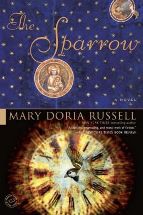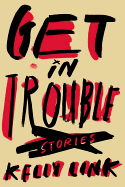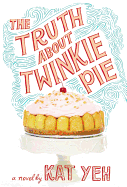 Ella Leya was born in Baku, Azerbaijan, and received asylum in the United States in 1990. She is a composer and singer, and lives in Laguna Beach, Calif., and London. We recently had the opportunity to interview her and discuss folklore, art and her forthcoming debut novel, The Orphan Sky (our review is below).
Ella Leya was born in Baku, Azerbaijan, and received asylum in the United States in 1990. She is a composer and singer, and lives in Laguna Beach, Calif., and London. We recently had the opportunity to interview her and discuss folklore, art and her forthcoming debut novel, The Orphan Sky (our review is below).
How much of your novel is autobiographical?
When you start writing, you want to do everything according to your own life story. Then all the borders begin to blend, and after working back and forth and writing and revisions, you almost lose track of what's real and what's fictional. I grew up in Baku, Azerbaijan, in a family that was very intelligent and quite high standing. My mom was a famous pediatrician in Baku, and my dad was the main engineer of five subway systems in the Soviet Union. I had a sister, a great classical pianist, so Leila is in a way a combined character of my sister and myself. I studied violin then switched to piano. The green door that opens and sabotages Leila's very cloudless Communist childhood partly is fictional, partly is right. There was a tiny music store that opened across the street from my school, and when I was 13 years old, I broke all the rules--I wasn't supposed to sneak inside it. That's where I heard jazz for the first time, and it shocked me beyond belief. All my love and passion for music was tested because I just knew that that's what I wanted to do, not just Beethoven and Chopin and Mozart. I wanted to do something with jazz because it was so real and so visceral.
Is your creative process the same for music and writing?
It is a natural transition. I was always in love with Russian poets of the Silver Age: Anna Akhmatova, Nikolai Gumilev, Osip Mandelstam. They made me see and express the world through musical metaphors. I started studying English through listening to Billie Holiday and Ella Fitzgerald. I think that I caught a bug, poetic expression. When I came to America, I came with my little boy, and he learned English much quicker than I did. We'd spend a lot of nights in the hospital when he was sick, and he was writing poetry, I was writing music. That was my introduction to expressing myself through words.
I lost my son, and that horrible sense of loss and loneliness.... First I tried music. I recorded all the songs that we created together. Then I felt that I ran out of notes, and that's when I turned to words and I started writing. First it was just a chance to relive our past and look for some answers.
Did you find those answers?
I think that art never can answer questions. It only can create more questions, and maybe that's what's most beautiful to think about--it gives a sense of continuity.
 How do you turn art and music into such beautiful literary imagery, particularly in a second language?
How do you turn art and music into such beautiful literary imagery, particularly in a second language?
I always felt that whatever it is, melody, or combination of colors, or a beautiful line, if you can put it in words, they don't necessarily have to be understood. But I would write a line, and then I would bother all my friends: "Do you think that Americans will understand what I'm trying to say?" I had that freedom of putting my second language forward in several combinations, creating a mosaic of my feelings, and that's what I always did with music. I believe both mediums have close ties in terms of melody, rhythm, modulations, changing of the key. Schubert described the E minor key as a maiden in a white dress with a red rose. Kandinsky generally painted using music polyphonies, Bach's polyphony. Conflicts of colors, melodies, connected with spontaneous images of nature, gave me the tools to express feelings--hopefully understandably enough.
You weave several folktales into your narrative. Are they the stories of your childhood?
Yes, especially the Maiden Tower legend. Maiden Tower is that place in the past where all dreams begin. To me, legends are ways to expand, to add an additional dimension to a feeling. It's like a treasure chest, and every time you open it, you find another compartment that you missed last time--whether it's wisdom, whether it's just a tiny little nuance of the relationship. When I grew up, I always had a book of legends and fairy tales under my pillow. I believed that if I had them there, then something will come into my head.
Maiden Tower legend was the first legend I think I heard. My mom took my sister and me to the top of Maiden Tower, and she told us the legend of the girl who fell in love with a young knight. But her father--this was Byzantine times and incest was quite normal--the shah, her father, wanted to marry his daughter, and she, in order to delay the process, asked him to build a tower that would reach the sky, hoping that he will change his decision. He didn't; the tower was built. The lover came for her and had a battle with her father and won, but the princess saw the battle from the tower and thought her father won, so she threw herself into the Caspian Sea.
I remember climbing those stairways to the top of Maiden Tower, hoping that I will find this princess before she leaps into the sky, into the sea, and that I can stop her, be two minutes early to let her know that it's a mistake! I wanted to take that legend and believe that I had this power to change it, and in this novel, I think that I satisfied my childhood desire to alter the ending, that at the end, there is some kind of solution.
The aesthetics of the East are so interesting even when applied to the stark period of 1970s Soviet Azerbaijan. They helped me to show that underneath that starkness, there was the real, ancient soul. I hope that folklore helped me to bring it to the surface.
The Orphan Sky highlights other conflicts and inconsistencies in Leila's Communist world. Is that what you felt as a teenager?
I called it the kingdom of darkness. It's this terrible constant game of truth and lies, darkness and light. Leila is trying to find light. She loses her ability to play because her soul is filled with darkness. How do you get back to music, if you have darkness in your soul? I have to admit this is what I've been living for many years, despite all successes and failures. To overcome darkness in your soul is a much more difficult challenge, and Leila lives with it for years, even after she escapes the external darkness. She still cannot achieve freedom because of that, and I think that this is me. I always say that I'm half romantic, half terrible cynic because of my upbringing. Because there's something we carry in our souls throughout life, me and a lot of my friends. That's our inheritance from the Communist past. --Jaclyn Fulwood, blogger at Infinite Reads
Ella Leya: The Power to Change the Ending
 The Dawn Wall quest inspired another expedition--one closer to my bookish heart--during which I discovered Ansel Adams in Yosemite Valley: Celebrating the Park at 150 by Peter Galassi. The term "coffee-table book" does not begin to do this work justice. "Monumental" seems a more appropriate description of the approximately 150 images by the legendary photographer, including stunning shots of Half Dome, Cathedral Rocks, Royal Arches and, yes, El Capitan.
The Dawn Wall quest inspired another expedition--one closer to my bookish heart--during which I discovered Ansel Adams in Yosemite Valley: Celebrating the Park at 150 by Peter Galassi. The term "coffee-table book" does not begin to do this work justice. "Monumental" seems a more appropriate description of the approximately 150 images by the legendary photographer, including stunning shots of Half Dome, Cathedral Rocks, Royal Arches and, yes, El Capitan.


 Ella Leya
Ella Leya How do you turn art and music into such beautiful literary imagery, particularly in a second language?
How do you turn art and music into such beautiful literary imagery, particularly in a second language? In Mary Doria Russell's debut novel, The Sparrow (Random House), first published in 1996, humankind discovers an alien world called Rakhat, on which live two races known as the Runa and the Jana'ata. The Jesuit order sends a secret mission, led by Father Emilio Sandoz, to travel to Rakhat on a starship built from an asteroid and make contact with the aliens. Decades later, Sandoz returns to Earth as the expedition's sole survivor and is subsequently interrogated as part of a Jesuit inquest. The story switches chapter-by-chapter between flashbacks to the expedition and Sandoz's interrogation in 2059. The book won the Arthur C. Clarke Award, and in 1998 Russell followed up with a sequel called Children of God. On March 3, Ecco will publish her next book, Epitaph: A Novel of the O.K. Corral, the subject of our
In Mary Doria Russell's debut novel, The Sparrow (Random House), first published in 1996, humankind discovers an alien world called Rakhat, on which live two races known as the Runa and the Jana'ata. The Jesuit order sends a secret mission, led by Father Emilio Sandoz, to travel to Rakhat on a starship built from an asteroid and make contact with the aliens. Decades later, Sandoz returns to Earth as the expedition's sole survivor and is subsequently interrogated as part of a Jesuit inquest. The story switches chapter-by-chapter between flashbacks to the expedition and Sandoz's interrogation in 2059. The book won the Arthur C. Clarke Award, and in 1998 Russell followed up with a sequel called Children of God. On March 3, Ecco will publish her next book, Epitaph: A Novel of the O.K. Corral, the subject of our 











